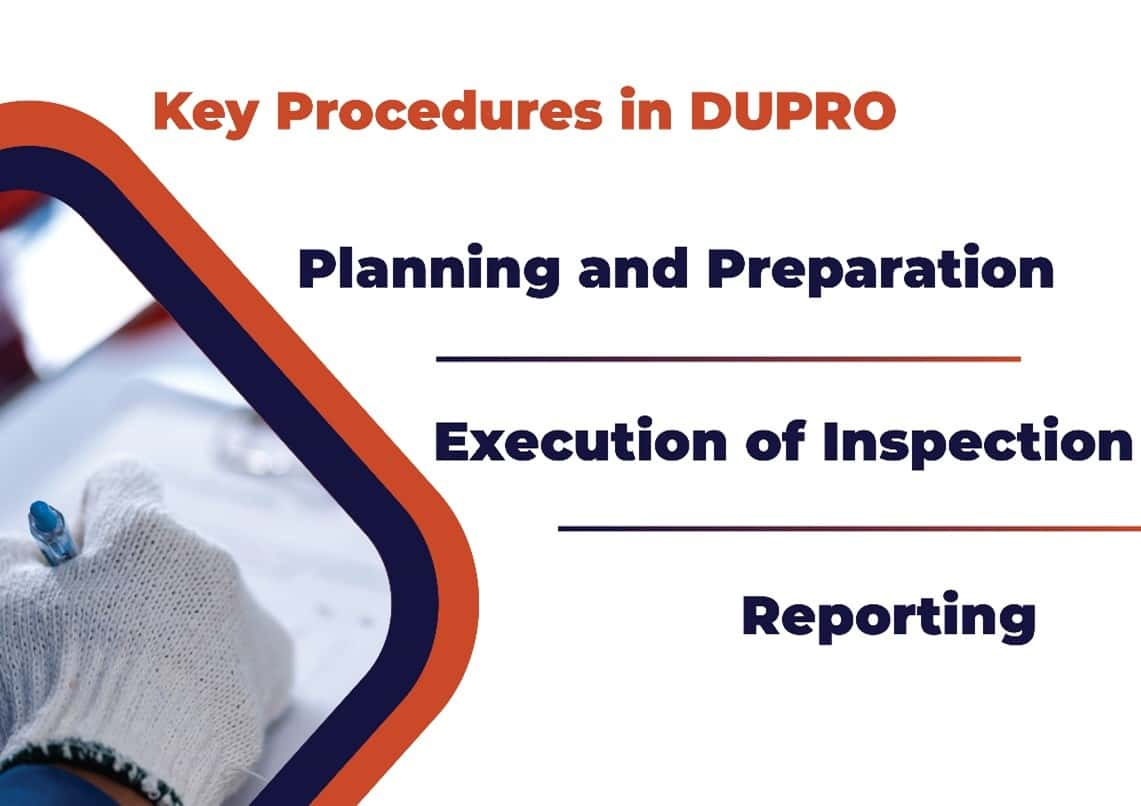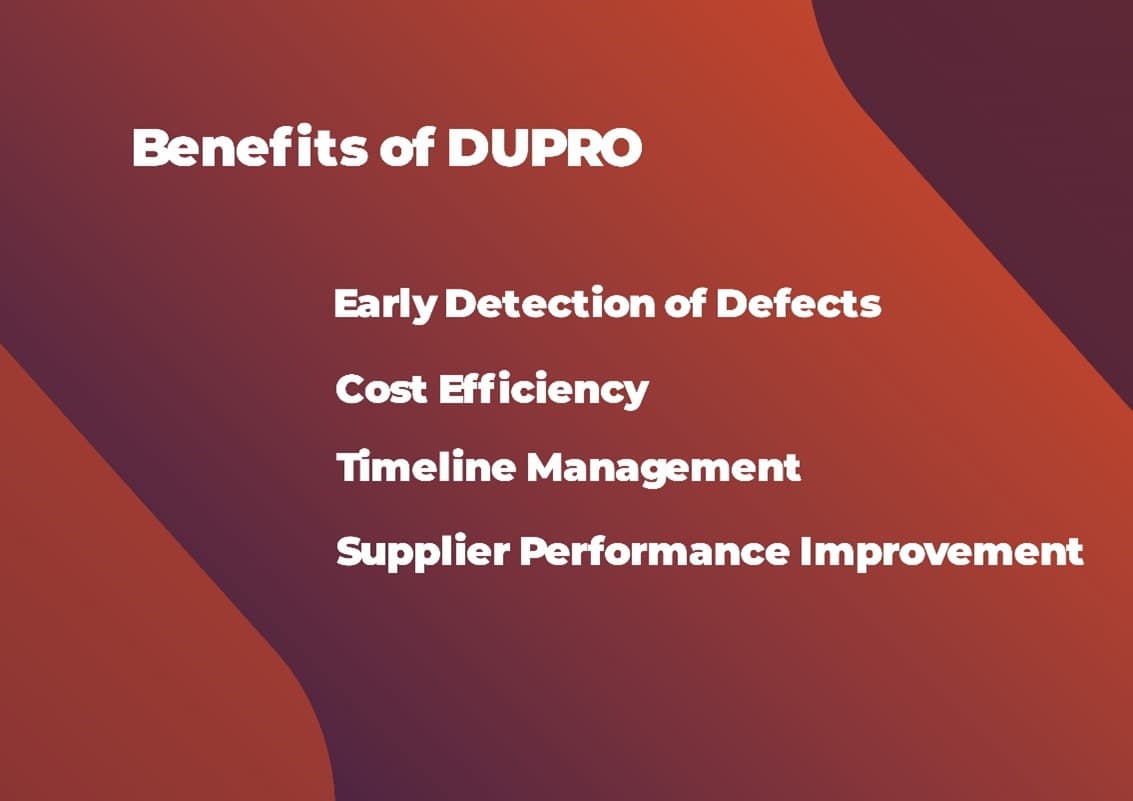During Production Inspection (DUPRO) is a critical quality control process that occurs midway through the manufacturing cycle. This inspection is designed to ensure that the production methods and outputs meet the predefined standards and specifications before the completion of the entire batch.
The importance of DUPRO in the manufacturing process cannot be overstated. It serves as a proactive measure that helps in minimizing the risk of significant quality failures, which can lead to costly recalls and damage to brand reputation. Additionally, DUPRO assists in verifying that the production schedule is being followed, ensuring that the project remains on track to meet its deadlines.
This article will cover several key topics related to DUPRO, including its roles and responsibilities, how it integrates with other quality control processes, and best practices for conducting effective inspections.
Understanding DUPRO
During Production Inspection (DUPRO) is a quality assurance approach conducted while production is ongoing, typically when 10-80% of the manufacturing process is completed. This strategic timing allows for an in-depth review of the product as it takes shape, ensuring that both the process and part of the batch adhere to the required standards and specifications. DUPRO mainly focuses on the conformity of production to the agreed terms, identifying defects, and implementing corrective measures without delaying the manufacturing schedule.
Distinguishing DUPRO from other production inspections is crucial for understanding its unique place in quality control. Unlike Pre-Production Inspection, which assesses raw materials and components before manufacturing begins, DUPRO examines products during the manufacturing process. This mid-production check is different from Pre-Shipment Inspection (PSI), which only occurs after production is completed and before the goods are shipped. PSI focuses on the end product’s compliance with quality standards and order specifications, without the possibility of corrective action within the production cycle.
Key Procedures in DUPRO

During Production Inspection (DUPRO) is an essential part of maintaining standards throughout the manufacturing process. Implementing DUPRO effectively involves several critical steps, from planning to reporting. Here’s how these procedures typically unfold:
Planning and Preparation
Effective DUPRO begins with thorough planning and preparation. This includes:
- Setting Objectives for the Inspection: Clear goals must be established to guide the inspection process. These objectives should focus on verifying adherence to the product specifications, production timelines, and quality benchmarks.
- Selection of Samples for Inspection: Selecting representative samples from the production line is crucial. These samples should reflect the overall batch and include units from different stages of the production process to ensure a comprehensive inspection.
Execution of Inspection
The execution phase is the core of DUPRO, where active inspection takes place:
- Checking the Production Schedule and Progress: Inspectors review the production timeline and actual progress to ensure the project is on track. Delays or accelerations in production are noted for further evaluation.
- Examination of the Quality of Raw Materials and Components: Inspectors verify that the raw materials and components used meet the quality standards specified in the initial agreement.
- Assessment of the Manufacturing Processes and Equipment: This involves a detailed check of the manufacturing procedures and the condition and suitability of the equipment used, ensuring everything functions as intended.
- Compliance Checks against Safety and Regulatory Standards: Inspectors ensure that the production complies with relevant safety and industry-specific regulatory standards, which is critical for market acceptance and consumer safety.
Reporting
The final phase in DUPRO is reporting, which is vital for continuous improvement:
- Documenting Findings: All findings from the DUPRO are meticulously documented, including any deviations from the planned process or product defects. This documentation provides a record that can be referred back to for future inspections.
- Communicating Issues and Recommendations to Management: The documented report is then communicated to management. This report includes any issues discovered during the inspection and recommendations for corrective actions. Prompt and clear reporting ensures that the management can make informed decisions quickly to rectify any identified problems.
Benefits of DUPRO

During Production Inspection (DUPRO) offers significant advantages to manufacturers by integrating crucial quality checks throughout the production process. Here are some of the key benefits:
Early Detection of Defects
One of the primary advantages of DUPRO is the early detection of defects within the production cycle. By identifying issues when only a portion of the production has been completed, manufacturers can avoid the costs and challenges associated with widespread quality failures. Early detection allows for immediate corrective actions, which prevents the defects from affecting a larger batch of products, thereby safeguarding product quality and reducing waste.
Cost Efficiency
Catching defects early through DUPRO not only maintains quality but also significantly reduces costs. When defects are identified and corrected during the production phase, the expense and effort of reworking or scrapping finished products are avoided. Moreover, addressing issues early typically requires less intensive corrections compared to those needed after the completion of production. This efficient management of resources contributes to overall cost savings and maintains profit margins.
Timeline Management
Regular monitoring of the production process through DUPRO helps ensure that the production remains on schedule. By continuously assessing production progress and quality, DUPRO inspectors can identify delays or deviations from the planned timeline early, allowing management to make the necessary adjustments to keep the project on track. This is crucial in maintaining adherence to delivery deadlines and fulfilling customer expectations.
Supplier Performance Improvement
DUPRO also plays a critical role in maintaining and improving supplier standards. Regular inspections provide ongoing feedback to suppliers about their performance, which encourages continuous improvement in their processes and output quality. This feedback loop not only helps in achieving the desired product quality but also strengthens the relationship between manufacturers and their suppliers by building trust and fostering collaboration based on clear quality expectations.
Overall, DUPRO is a strategic tool that enhances product quality, reduces operational costs, ensures timely production, and improves supplier performance, making it an indispensable part of modern manufacturing practices.
Conclusion
Throughout this discussion on During Production Inspection (DUPRO), we’ve highlighted its pivotal role in the manufacturing process. DUPRO is not merely a checkpoint but a strategic tool that ensures high quality and consistency in production. The key benefits of DUPRO include the early detection of defects, which prevents the escalation of quality issues and minimizes waste. Additionally, it promotes cost efficiency by reducing the need for costly reworks and maximizes the use of resources by addressing problems before they become more severe.
Moreover, DUPRO is instrumental in managing production timelines. It enables manufacturers to stay on schedule by providing real-time insights into the progress of manufacturing, ensuring that any deviations are promptly corrected. This aspect is crucial for meeting delivery commitments and maintaining customer satisfaction.
The strategic value of DUPRO extends beyond immediate production concerns. It plays a significant role in supplier performance improvement by setting a standard of continuous feedback and accountability. This not only helps in fine-tuning the production processes but also strengthens the collaborative efforts between a manufacturer and its suppliers, fostering a culture of quality and excellence.


